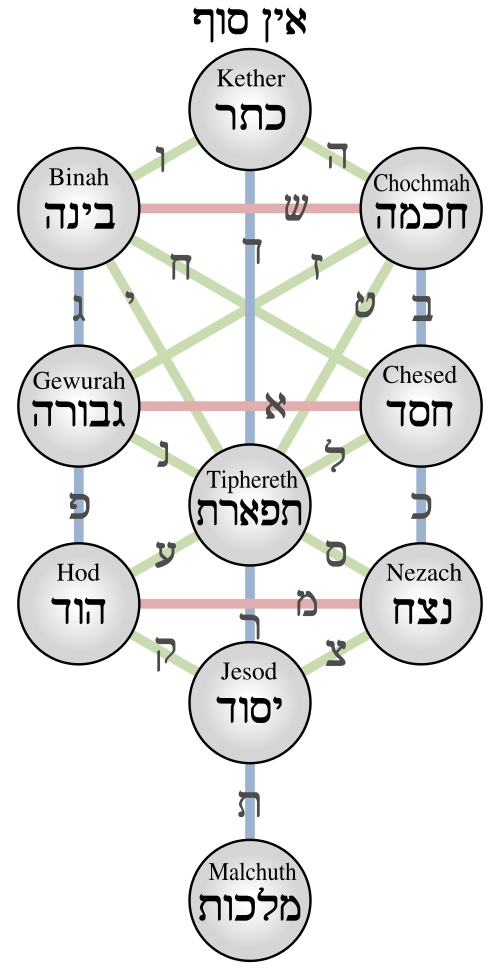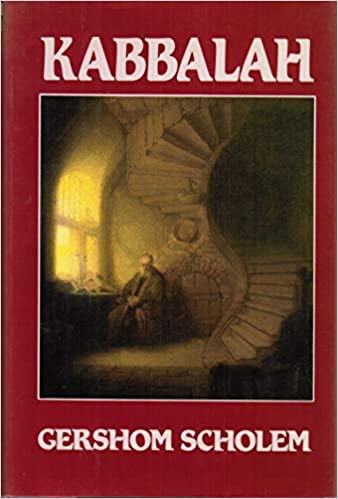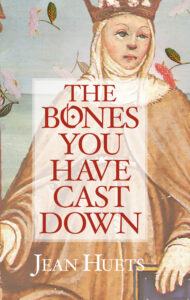The Kabbalah & the Occult Tarot
The mystical system called the Kabbalah is vast and elaborate, embracing the cosmos without and the cosmos within. To explain it in brief, or even in a thousand books, is like trying to measure the celestial vault above us.
I’m not about to try it.
This is an introduction, in two parts, to the connection of the Kabbalah and the occult tarot. If you find parts confusing or feel there are gaps or inaccuracies, please share your thoughts in a comment.
Part I: Roots and Seeds of the Kabbalah
Part II: Kabbalah and the Tarot
Brief introduction to tarot
A few notes: Because many of the terms are transliterated from Hebrew, and because Hebrew itself does not have capital / lowercase letters, the spelling and capitalizations are inconsistent among commentaries. I’ve kept the authors’ usage. Where several translations of words are commonly used, I’ve included them with slashes between.
For the history and meaning of the Kabbalah, there’s no source like Kabbalah, by Dr. Gershom Scholem (1897 – 1982), who was the first professor of Jewish Mysticism at Hebrew University of Jerusalem. Kabbalah is foundational for learning about the Kabbalah from just about any point of view, including traditional and occult.
Roots and Seeds of the Kabbalah
The Kabbalah (also transliterated as Cabala and Qabalah) originated as a Jewish esoteric theosophy. Paradoxically, the Kabbalah is a method to study intellectually what cannot be apprehended intellectually. In that sense, it’s an intersection of mysticism and philosophy.
The “Christian Kabbalah” emerged in the Italian Renaissance period. From there, Kabbalistic principles streamed into European occult traditions and thence to the tarot.
One origin myth of the Kabbalah holds that God taught it to a select company of angels who formed a theosophic school in paradise. Another myth claims that God revealed the Kabbalah directly to Moses during the forty days on Mount Sinai. It is believed that David and Solomon were initiated into the Kabbalah. Supposedly, Kabbalistic teachings took only oral form for centuries before the first texts were written. Some teachers preserved its esoteric origins, limiting their number of students, requiring a certain ethical standard or maturity, and so on. The secret side of the Kabbalah lives on. I was sitting across the desk from an allergy doctor in Manhattan, several years ago. Dion Fortune’s The Mystical Qabalah sat atop a stack of books I’d put on the desktop while we talked. As our consultation ended, he nodded toward the book and said, “They say you can go insane if you’re not ready to study that.” (I’ve had my ups and downs, like anyone, but so far, have managed to keep a fairly good grip on my sanity.)

The earliest texts of the Kabbalah were issued in the early centuries of the Common Era, a fascinating time when the exchange of ideas in the Mediterranean region dropped seeds that would flower again in the European Renaissance. In this context, the Kabbalah could be described as Jewish mysticism infused with other schools of thought, including Neoplatonism, Gnosticism, Pythagoreanism, and Hellenism.
Two of the earliest known texts are the anonymous Sepher Yetzirah (Book of Creation / Formation), which may date as far back as the second or third century CE; and The Bahir or Sefer haBahir (Book of Lights / Brightness / Illumination), a first-century CE work attributed to Nehunya ben HaKanah. Another root text is the Sepher ha-Zohar (Book of Splendors), usually called in English The Zohar, written between 1280 and 1286 by Moses b. Shem Tov de Leon, near Madrid.
The Kabbalah and the Tree of Life
“All kabbalists agree that no religious knowledge of God, even of the most exalted kind, can be gained except through contemplation of the relationship of God to creation. God in Himself, the absolute Essence, lies beyond any speculative or even ecstatic comprehension.” (Scholem, p. 88)
Kabbalists call that unknowable, indefinable God En Soph, “infinite.” The cosmos, seen and unseen, originates as an emanation from En Soph. One of the greatest paradoxes of Kabbalism rests exactly here: En Soph’s attributes are completely unknowable; En Soph could be said to have no attributes. Why, then, (not to mention how) would En Soph emanate anything? Scholem wisely says, “It is a free decision which remains a constant and impenetrable mystery.”
Whatever its cause, instigation, or inspiration, the cosmic creative process is represented in the Kabbalah by a diagram called the Tree of Life. It is through contemplation and study of the Tree, its parts, and its meanings and correspondences that Kabbalists approach the unapproachable God. Scholem quotes the Sefer ha-Bahir: “All the divine powers of the Holy One, blessed be he, rest one upon the other, and are like a tree.”

The Tree represents the cosmic creative process as a procession of ten sephiroth (singular, sephirah), or “intelligences.” The sephiroth emanate successively: the second comes from the first, the third from the second, and so on. (Note that En Soph, as unfathomable, is not represented on the Tree.) The sephiroth are both distinct emanations of God and representations of different aspects of the One Being.
The zinor—”paths” or “channels”—linking the sephiroth represent the influences the sephiroth have on each other. Depending on whether each path is counted once, or counted twice (for both directions), the paths add up to 22 or 32.
The Sephiroth have been given attributes to qualities human and, when perfect, Godly. The Creative Impulse is said to move “like lightning” down the tree in the following order.
- Kether: Crown, Attainment
- Chochmah (Chokhmah): Wisdom
- Binah: Intelligence
- Chesed: Love
- Gevurah: Justice, Strength (Fortitude), Discipline
- Tiphareth: Beauty
- Netzach: Victory
- Hod: Splendor
- Yesod: Foundation
- Malkuth: Dominion
Kabbalism also delineates four worlds in which the sephiroth act. These worlds can be interpreted as realms in which the stages of creation are manifested, from most ineffable to most material: Emanation, Creation, Manifestation, and Activity.
The Cosmic Human
The Tree represents not only the scheme of creation overall, but the primordial or earthly man, Adam Kadmon, as a reflection of the heavenly or cosmic man. For example, the first three Sephiroth represent the head, the fourth and fifth the arms, and so on.
When arranged in triads, the Sephiroth represent three human attributes:
- Intellect: Crown, Wisdom, Intelligence
- Morals: Love, Justice, Beauty
- Physical: Splendor, Foundation, Dominion.
Tarot and Kabbalah Approach Each Other
We haven’t ventured beyond a few tenets of the traditional Kabbalah, as laid out by Jewish scholars and mystics, examples that reveal merely a few specks of the elaborations and meditations that the Kabbalah has generated. A few points to note, as we transition to Kabbalah and the Occult Tarot are:
- If the paths are counted as 22, one can draw a correspondence to the tarot’s Major Arcana.
- Ten Sephiroth — ten numbered Minor Arcana Cards
- Four worlds — Four court cards
- The rich symbolism of the Kabbalah lends itself to the illustrations of the tarot as spiritual quest.
- Both Kabbalah and tarot have accreted bodies of symbolism that go far beyond what can be historically traced to their origins.
go to Part II: Kabbalah and the Occult Tarot
RENAISSANCE ITALY: GLORY, BEAUTY, GREED, WAR.
A POWERFUL HOLY WOMAN. THE INQUISITION….
A novel based on the true story of the Popess card of the tarot.
BUY: Signed by author, free shipping in US
BUY: bookshop.org | Amazon US | Amazon CA | B&N | indiebound
“Enchanting & richly historical, heart-wrenching & intoxicating.” —Stuart R. Kaplan, author Pamela Colman Smith.
“A storytelling treasure. The sights, smells, feel of Renaissance Italy seep from every pore of the story.” —Ron Andre, A Matter of Fancy
Brief Introduction to Tarot
Tarot cards were originally used for gaming but their use for divination and occult and spiritual studies is more well known today. Many variations of tarot decks have been issued. Traditionally, the deck has two main parts. The trumps, or Major Arcana, comprise 22 cards, numbered 0 through 21, with symbolic or allegorical illustrations on their faces. The suit cards, or Minor Arcana, comprise four suits of fourteen cards each: swords, batons / wands, cups, and coins / pentacles. Each suit comprises ten numbered cards (pips) and four court cards: king, queen, knight, and page. back to top


i think a confusion arises when noticing that the two tree of life models differ in the number of paths leading to malkuth. is there a system that’s more appropriate for tarot? between the two, which is more “validated” in dealing with the occult?
I don’t think so – the tarot and the Kabbalah are related only speculatively; there is no historically verified version of the tarot-Kabbalah overlay. As with many aspects of the tarot, it’s up to the person studying it to find what enriches their particular outlook.